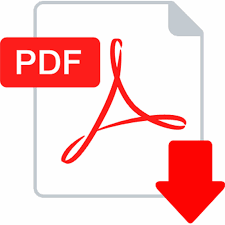
DOI: 10.32702/2307-2105-2019.10.171
УДК: 658.14:332.1
Ю. А. Малахова
ПЛАНУВАННЯ ВПЛИВУ ПОДАТКОВОГО НАВАНТАЖЕННЯ НА ІНВЕСТИЦІЙНУ АКТИВНІСТЬ ВАНТАЖНИХ АВТОТРАНСПОРТНИХ ПІДПРИЄМСТВ
Анотація
В статті розроблено алгоритм планування джерел фінансування інвестиційних витрат підприємства в залежності від співвідношення між інтегральним коефіцієнтом податкового навантаження та його граничним значенням. Так, якщо очікується прибуткова діяльність підприємства, і коефіцієнт податкового навантаження більший за його граничне значення, то можливості інвестиційної активності обмежується власними коштами. Якщо ж коефіцієнт менший за граничне значення, то можливе запозичення коштів, що розширює обсяги інвестиційної діяльності. При цьому алгоритмом передбачено необхідність врахування рівня фінансових ризиків, пов’язаних з кредитуванням.
Здійснено розрахунок рентабельності власного капіталу, як показника інвестиційної привабливості підприємства, за трьома варіантами прогнозу. Результати розрахунків показали можливість збільшення капітальних інвестицій за рахунок зменшення податкового тиску на підприємство, яке обумовлено, в першу чергу, зростанням бази нарахування.
Ключові слова: Податкове навантаження; інвестиційна активність; коефіцієнт податкового навантаження; автотранспортне підприємство; планування.
Література
1. Богославець Т.І. Аналіз податкового навантаження та його вплив на кінцеві результати діяльності суб'єкта господарювання / Т.І. Богославець // Вісник Національного транспортного університету: В 2-х частинах: Ч. 1. – К.: НТУ, 2012. – Вип. 19. – С. 1-5.
2. Малахова Ю.А. Обґрунтування граничного значення коефіцієнта податкового навантаження на підприємствах вантажного автомобільного транспорту / Проблеми і перспективи економіки та управління: науковий журнал / Черніг.нац. технол. ун-т. – Чернігів: Черніг.нац. технол. ун-т., 2015. - №3(3). - С. 280-284.
3. Малишкін О. Коефіцієнт податкового навантаження на мікро-рівні: розрахунок та застосування / О. Малишкін // Бухгалтерський облік і аудит. ‒ 2015. ‒ № 1. ‒ С.18 – 25.
4. Меліхова Т.О. Удосконалення методів аналізу податкового навантаження та господарської діяльності підприємств// Наукові праці КНТУ. Економічні науки.-2010. – вип.17.- c.40-45
5. Новіков М.А. Порівняльний аналіз методик визначення податкового навантаження та шляхи їх удосконалення// Сталий розвиток економіки.-2011. - №7 – с.284-288.
6. Новосельська Л. І. Методи оцінювання рівня податкового навантаження підприємств / Л. І. Новосельська // Науковий вісник НЛТУ України. - 2013. - Вип. 23.10. - С. 239-244.
7. Ткаченко В. В. Аналіз впливу податків за рахунок собівартості продукції на економічні результати діяльності підприємства // Економіка підприємства. – 2010. – вип.11. – с.34-37.
Yuliia Malakhova
TAX LOAD IMPLEMENTATION PLANNING ON INVESTMENT ACTIVITY OF CARGO’S AUTO-OPERATING ENTERPRISES
Summary
For the owner of any business, taxes and fees are part of his income that can be invested in further developing the business for greater profits. The question of the impact of the current tax system on investment activity is an important aspect of the activity of each enterprise. Cargo’s auto-operating enterprises are no exception.When planning the level of investment activity of сargo’s auto-operating enterprises it is advisable to use the tax burden. Investment activity may be limited, based solely on the use of its own sources of financing, and active, involving borrowing. The boundary between them is the marginal value of the integral coefficient of tax burden, calculated using the method of financial leverage, taking into account the current rate on bank loans.
The article proposes an algorithm for planning sources of financing investment costs of an enterprise, depending on the relationship between the integral coefficient of tax burden and its marginal value. Thus, if the profitability of the enterprise is expected in the forecast period, and the tax burden is greater than its marginal value, then the opportunity for investment activity is limited by its own funds. If the ratio is less than the threshold value, then borrowing may be extended, which extends the scope of investment activity. This algorithm assumes the need to take into account the level of financial risks associated with lending. Only if the expected value of the leverage is less than acceptable to the enterprise, borrowing is appropriate. This model is an important component of tax management that determines the level of financial constraints on the possibilities of enterprise development.
The main indicator of the investment attractiveness of the company is the return on equity. The calculation of the return on equity and economic return on assets for three variants of the forecast - pessimistic, sustainable, optimistic. The results of the calculations showed the possibility of increasing capital investments by reducing the tax pressure on the enterprise, which is caused, first of all, by the growth of the accrual base. Increasing profitability contributes to increasing the investment attractiveness of cargo motor companies.
Keywords: Tax burden; investment activity; coefficient of tax burden; cargo’s auto-operating enterprises; planning.
References
1. Bohoslavets T. I. (2012), “Analysis of the tax burden and its impact on the ultimate results of an entity's activities”, Bulletin of the National Transport University: In 2 parts: Part 1, vol. 19, рр.1-5.
2. Malakhova Yu.A. (2015), “Substantiation of the limit value of the tax factor at the enterprises of freight road transport”, Problemy i perspektyvy ekonomiky ta upravlinnia: naukovyi zhurnal, vol.3(3), pp.280-284.
3. Malyshkin O. (2015), “Micro-level tax burden: calculation and application”, Bukhhalterskyi oblik i audyt, vol. 1, pp.18-25.
4. Melikhova T.O. (2010), “Improvement of methods of analysis of tax load and economic activity of enterprises”, Naukovi pratsi KNTU. Ekonomichni nauky, vol.17, pp. 40-45.
5. Novikov M.A. (2011), “Comparative analysis of methods of determining the tax burden and ways to improve them”, Stalyi rozvytok ekonomiky, vol.7, pp.284-288.
6. Novoselska L. I. (2013), “Methods of estimating the level of tax burden of enterprises”, Naukovyi visnyk NLTU Ukrainy, vol. 23.10, pp. 239-244.
7. Tkachenko V. V. (2010), “Analysis of the impact of taxes at the cost of production on the economic results of the enterprise”, Ekonomika pidpryiemstva. vol.11, pp.34-37.
№ 10 2019
Дата публікації: 2019-10-31
Кількість переглядів: 17110

